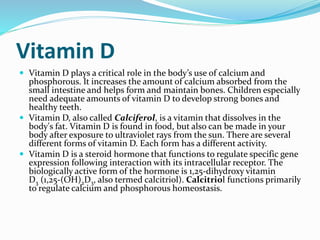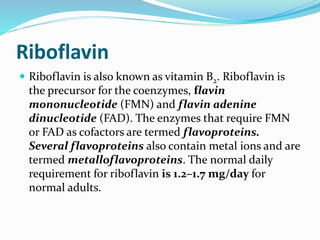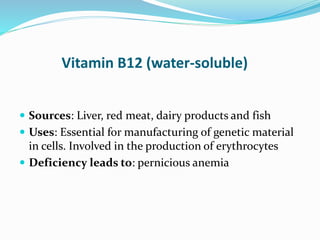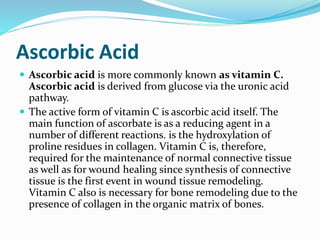Vitamins are organic substances that are essential for life and normal functioning of the body. There are 13 vitamins classified as either water-soluble or fat-soluble. Water-soluble vitamins dissolve in water and cannot be stored in the body for long, while fat-soluble vitamins are stored in body tissues. Vitamins perform important roles like energizing metabolism, regulating cell growth, and enabling vision in low light. Common sources of vitamins include foods like fruits, vegetables, meat, and dairy. Deficiencies can lead to conditions like scurvy or rickets.




























